
*
Español
April 7, 2024
by Luisa Ruiz
The contrast between two Holy Week events held last week is striking. The first, the Holy Burial, is a silent, solemn procession pervaded with sadness and mourning for the death of Jesus. The second, the Burning of Judas, is noisy with each paper mache character flaming and finally exploding.
For the procession of the Holy Burial, I arrived in the Jardin at 5:30pm. Already at that time there were many people on the side of the Jardin. There were just a few people across the street, so I sat on the sidewalk. From what I had heard, the procession of the Holy Burial would begin at 6pm, starting at the Oratorio, so we still had to wait, first for it to begin and then for it to arrive at our location.
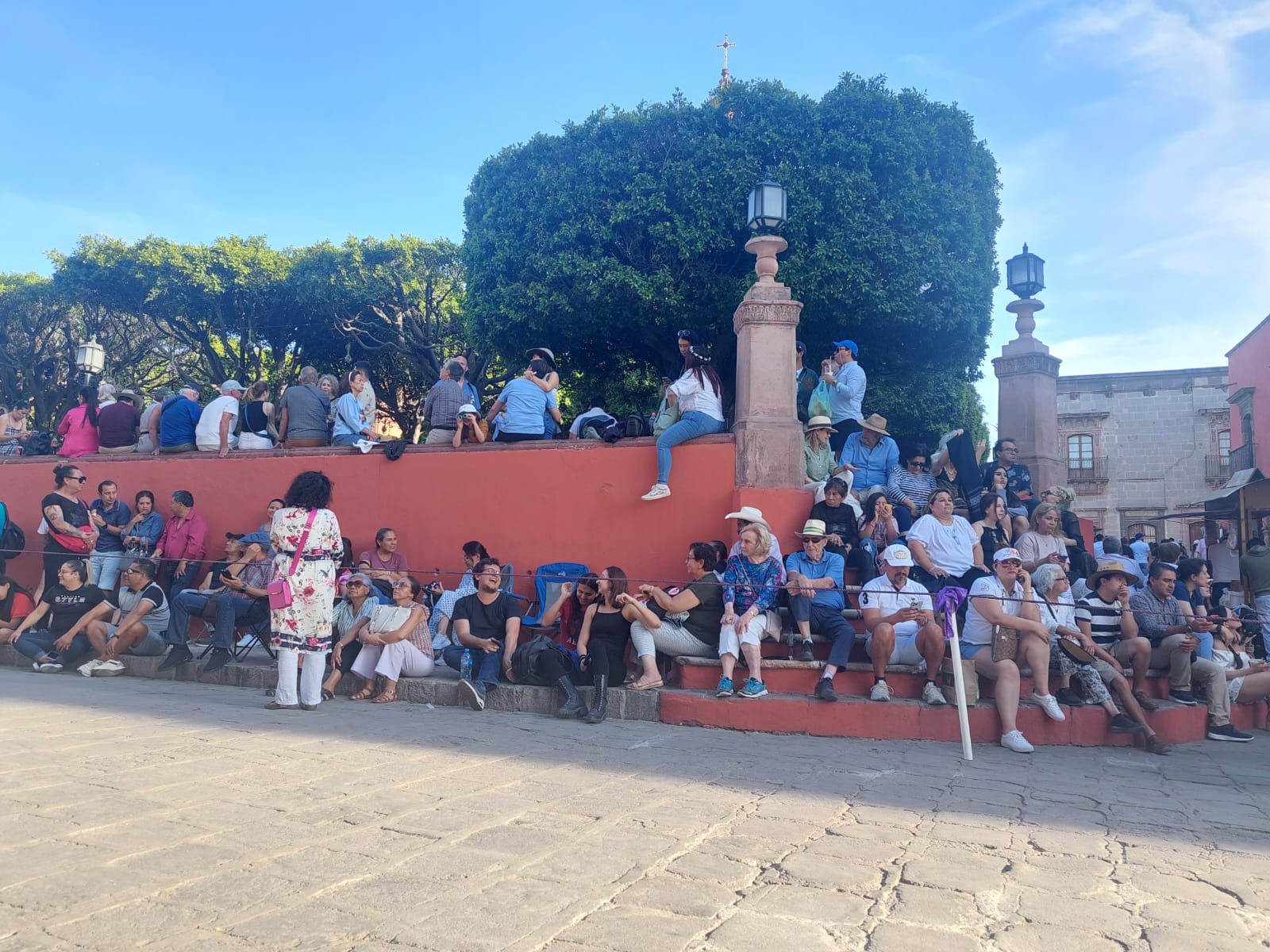
*
I took my notebook out of my backpack and began my daily ritual of composing three pages. Finishing in about 25 minutes, I devoted myself to people watching. More and more people were surrounding me.
Checking Facebook, I saw a video showing that the procession had already begun. At 6:30pm the procession was already seen in the distance. At 6:45 it arrived. At the beginning came a group of men, some carrying lanterns, and then eight men dressed in black suits, white shirts, black ties, white gloves and purple sashes, carrying on a platform on their shoulders the first image that is the crucified Christ.
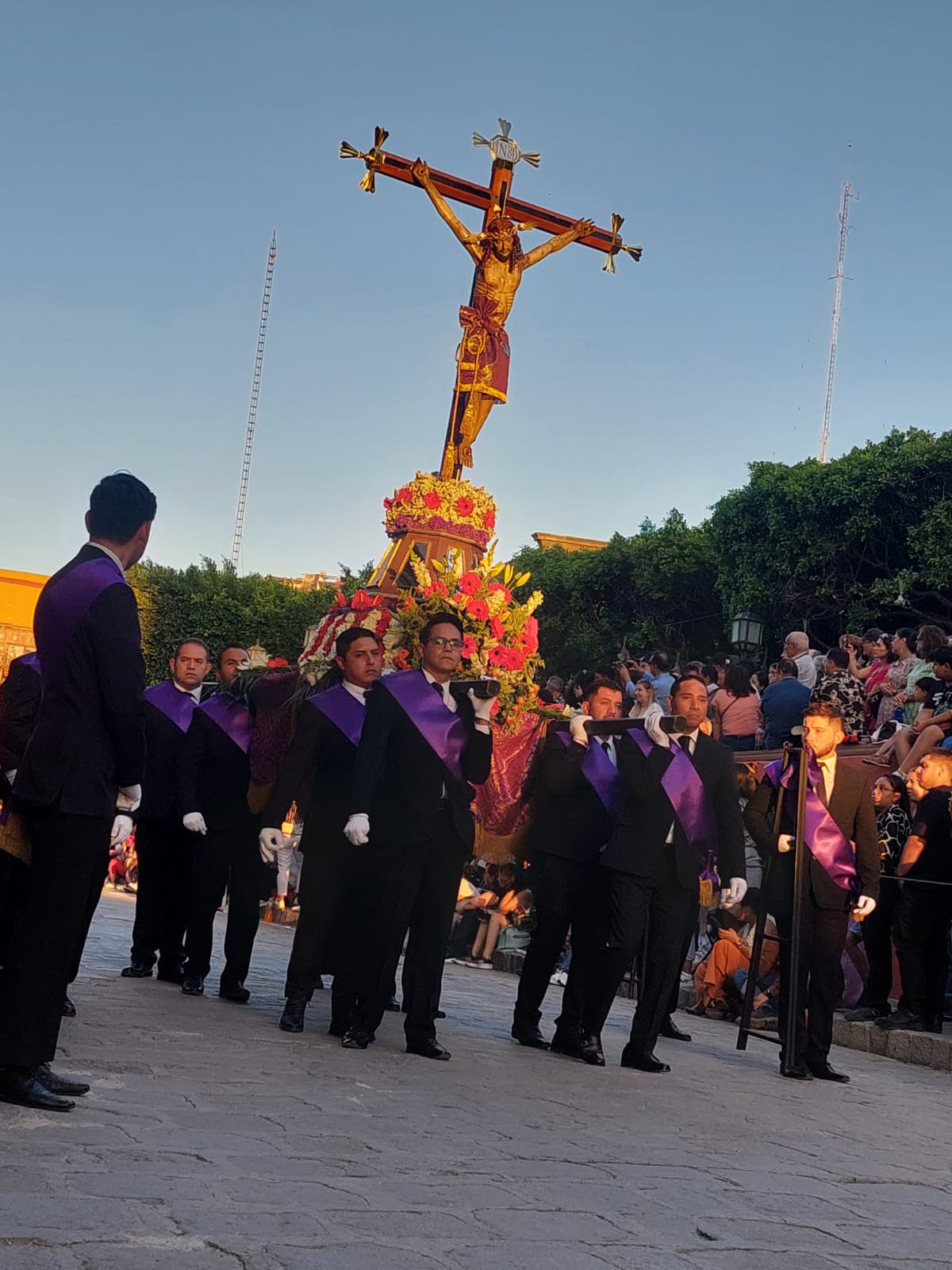
*
After this, another group of men dressed as Romans appeared. The Roman who led the procession was dressed in white with a purple cape. The other Romans dressed in red, with a red cape. They all wore a breastplate, a helmet, wristbands, a spear and a shield. On the right side, there was a Roman playing the drum and on the left side another playing the flute. The only other sounds were the footsteps of everyone who came in the procession.
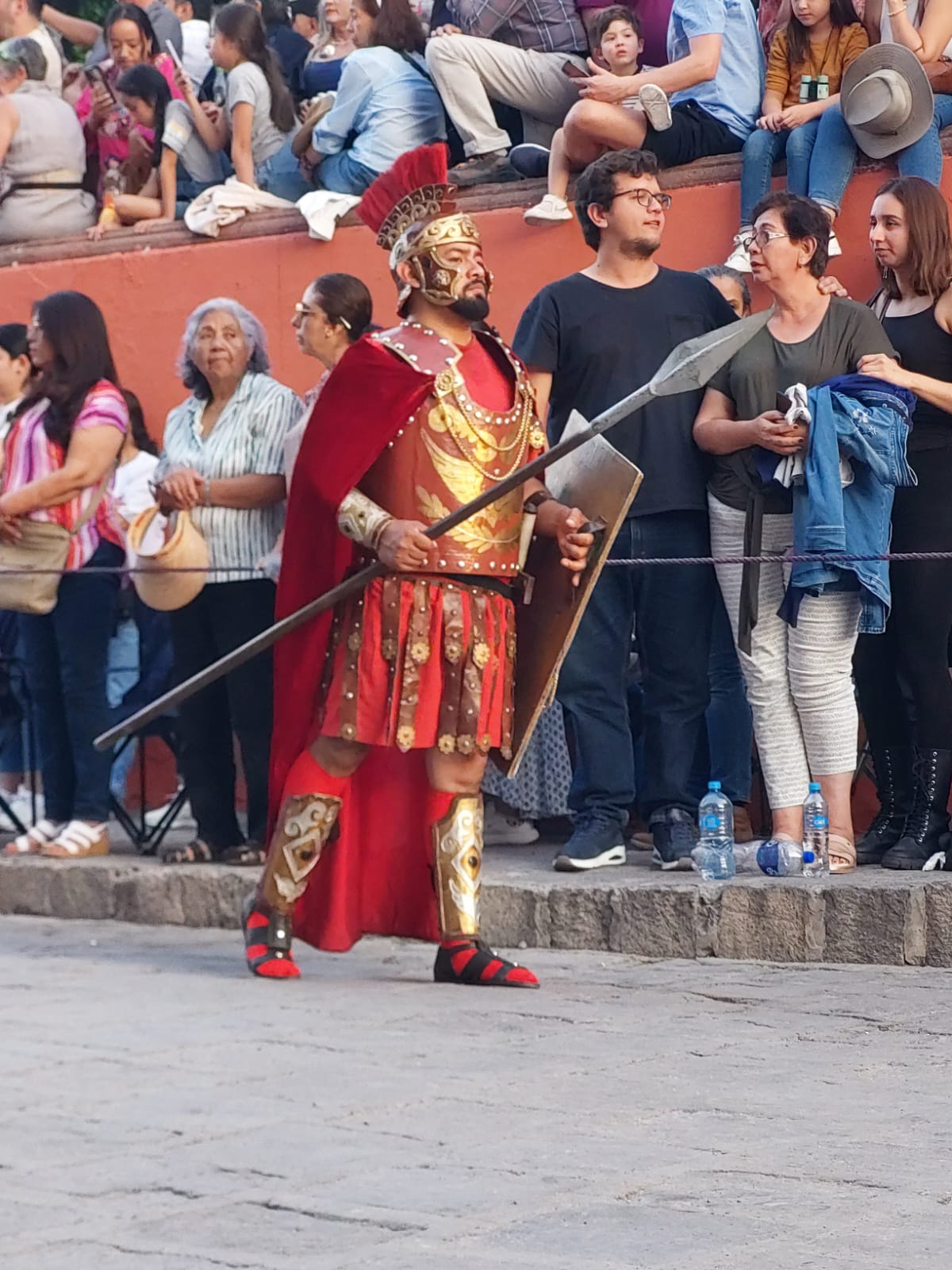
*
All of us who were watching the procession were silent, which impressed me because at most events people are talking. For me that silence represents pain and sadness because it is the day on which Jesus died crucified.
A few weeks ago I wrote the article about the Lord of the Column in which I mention that that pilgrimage has been made for 201 years. Going on for 311 years, this procession of the Holy Burial is 110 years older, at least four more generations, since 1713.
After the Romans, came many girls in white dresses. The first group of girls carried an image that had a hand and a chicken on a pedestal. The second group carried a cross. A third group was carrying an angel dressed in white.
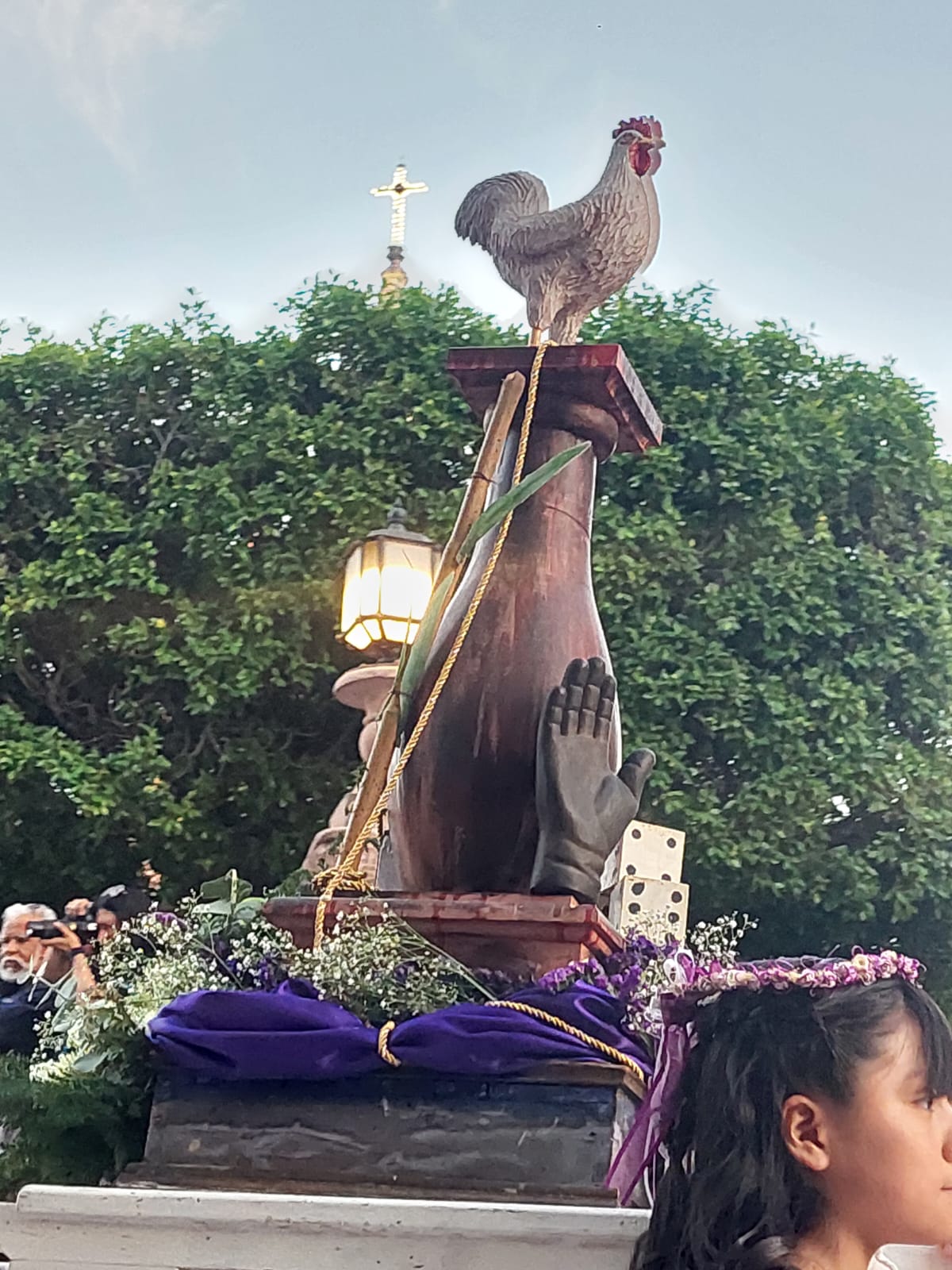
*
Later, I saw ladies dressed in black. There were three different groups and each group carried an angel; then, with lanterns. By this time it was dark, so you could see the flame of the candles in the lanterns. And then two girls appeared throwing chamomile stalks to cover the street and many men dressed in black carrying the image of the deceased Christ in a glass box. Behind this, three priests. And then a woman in a light blue dress and wings, simulating an angel and a choir singing followed by a band. Towards the end of the procession, a few more images of virgins and angels, another group of Romans and men in black.

*
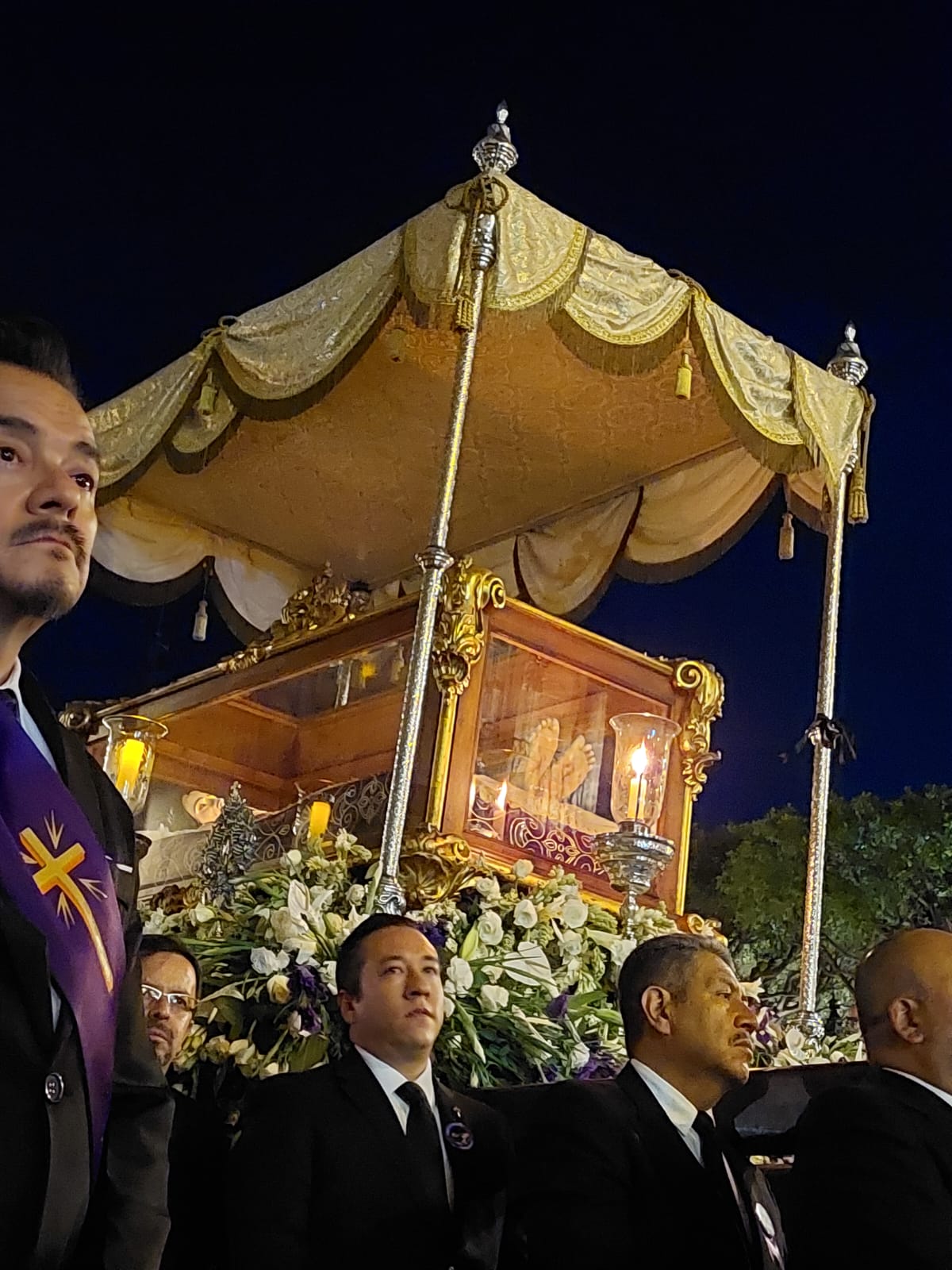
*
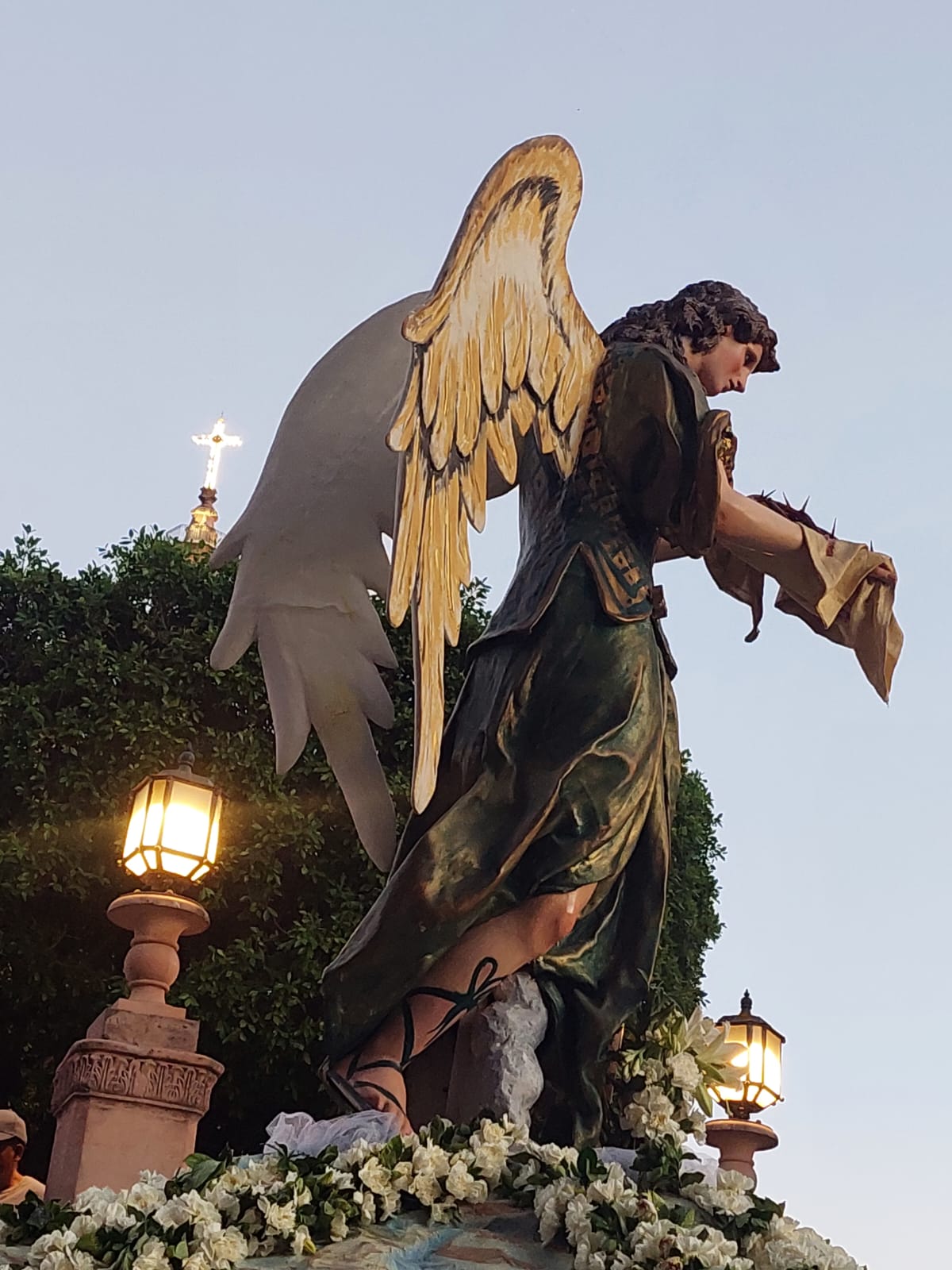
*

*
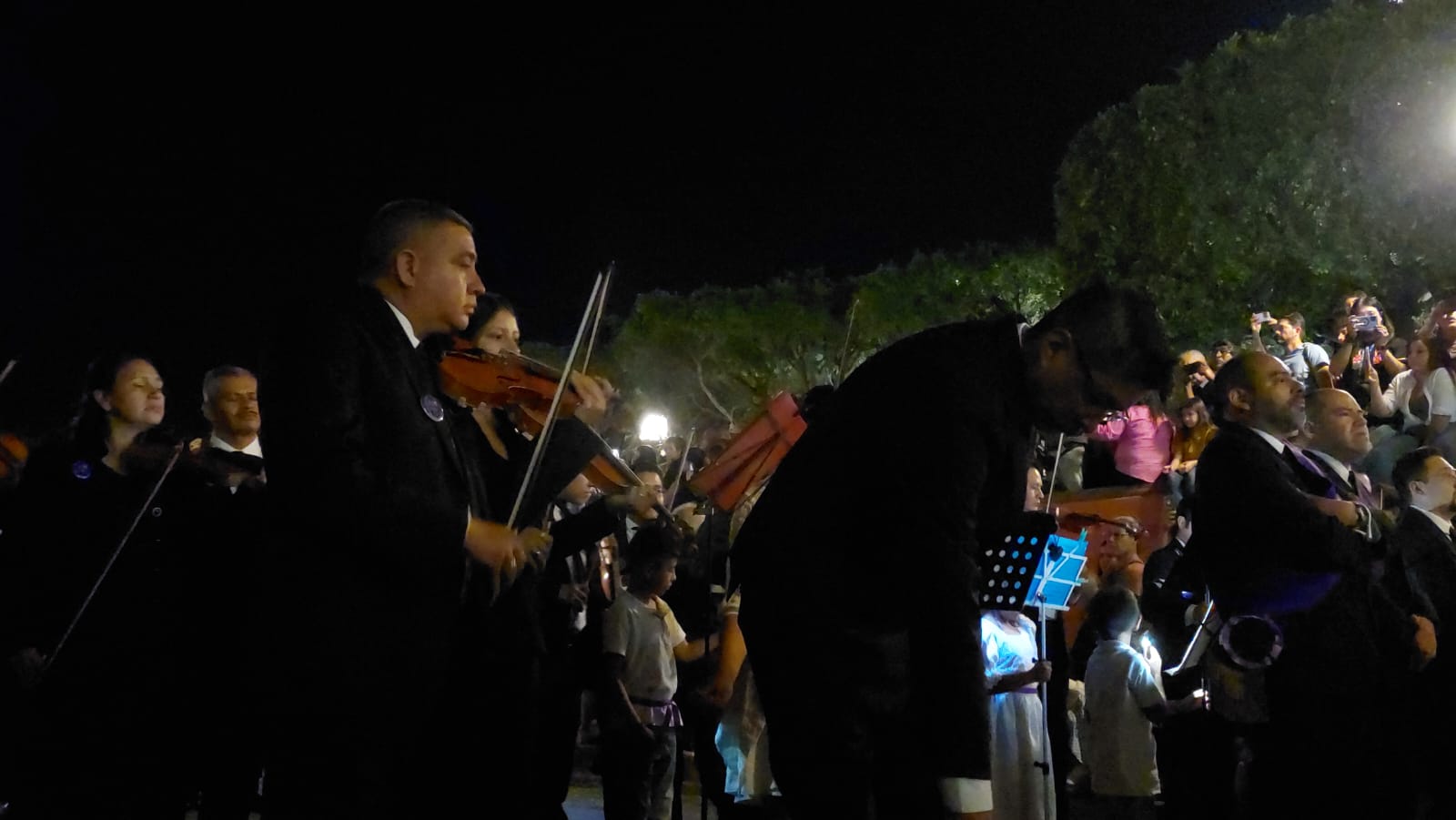
*
When the last of the procession passed, there was an army of people dressed in orange, who are street sweepers. As soon as the event was over, the streets of San Miguel were clean.
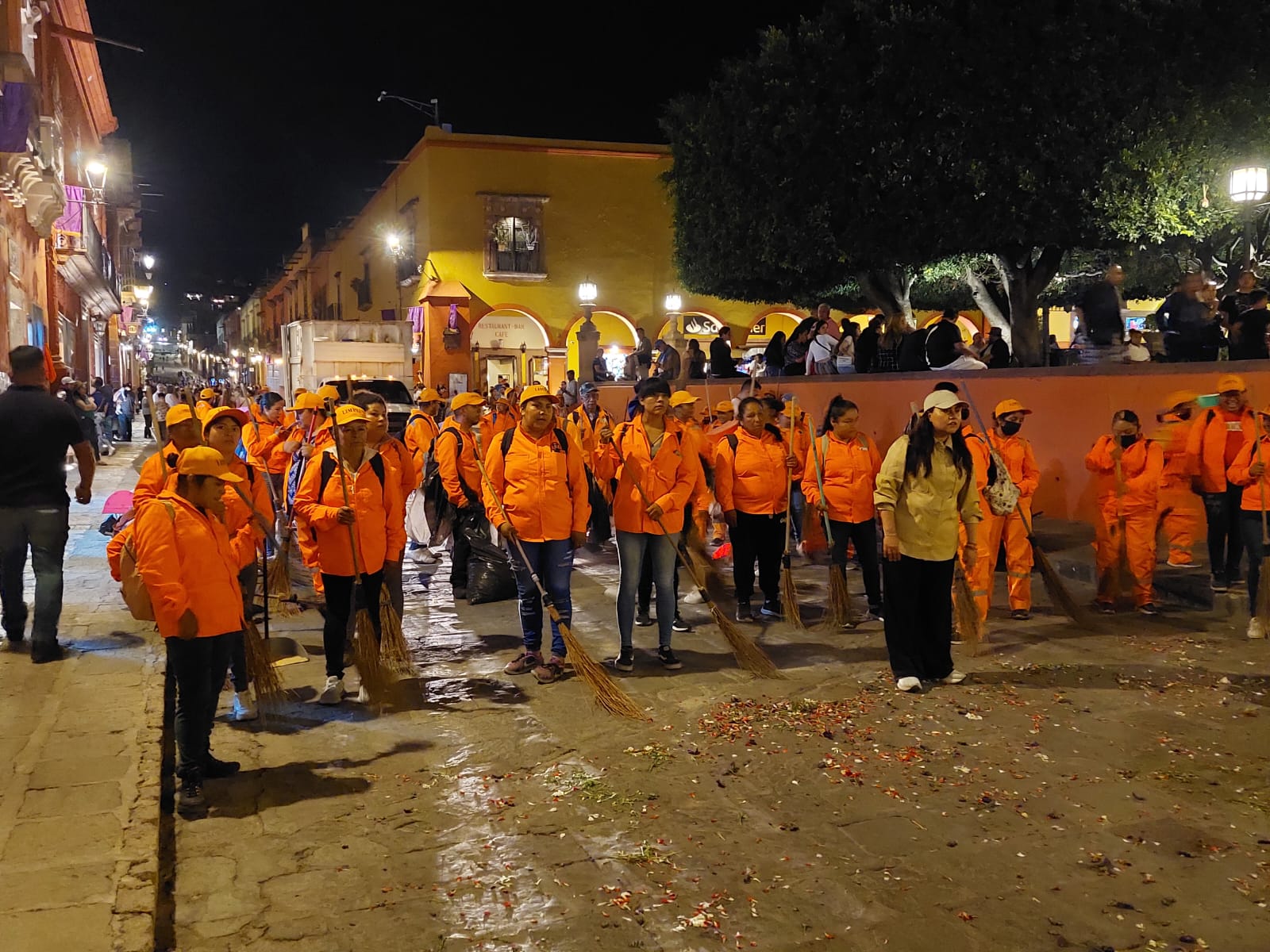
*
As the procession ended, people dispersed and many went home. I stayed a while more sitting in the Jardin, enjoying a noisy Friday night due to the large amount of tourists here for the holidays.
The following Sunday, Easter day, I arrived in the Jardin at 11am. Several figures were already leaning against the wall. Later a van arrived with the remaining figures.
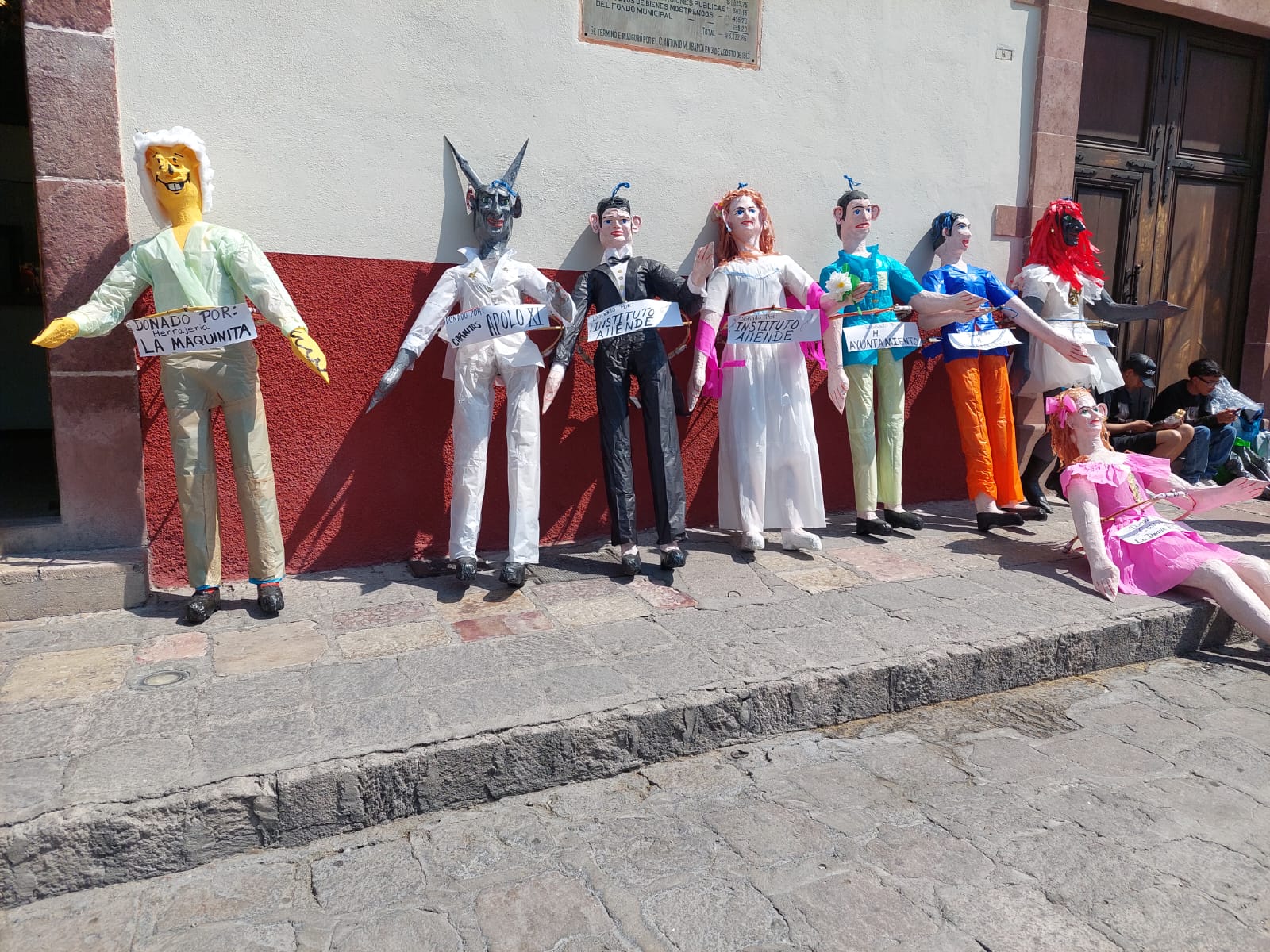
*
Although the event wasn't until 12pm, people arrived well in advance. There were no more empty seats on the benches, so I sat on the Jardin wall. I sat there until they kicked us out, as at around 11:30am they began to cordon off the area and we all had to stand behind the cord.
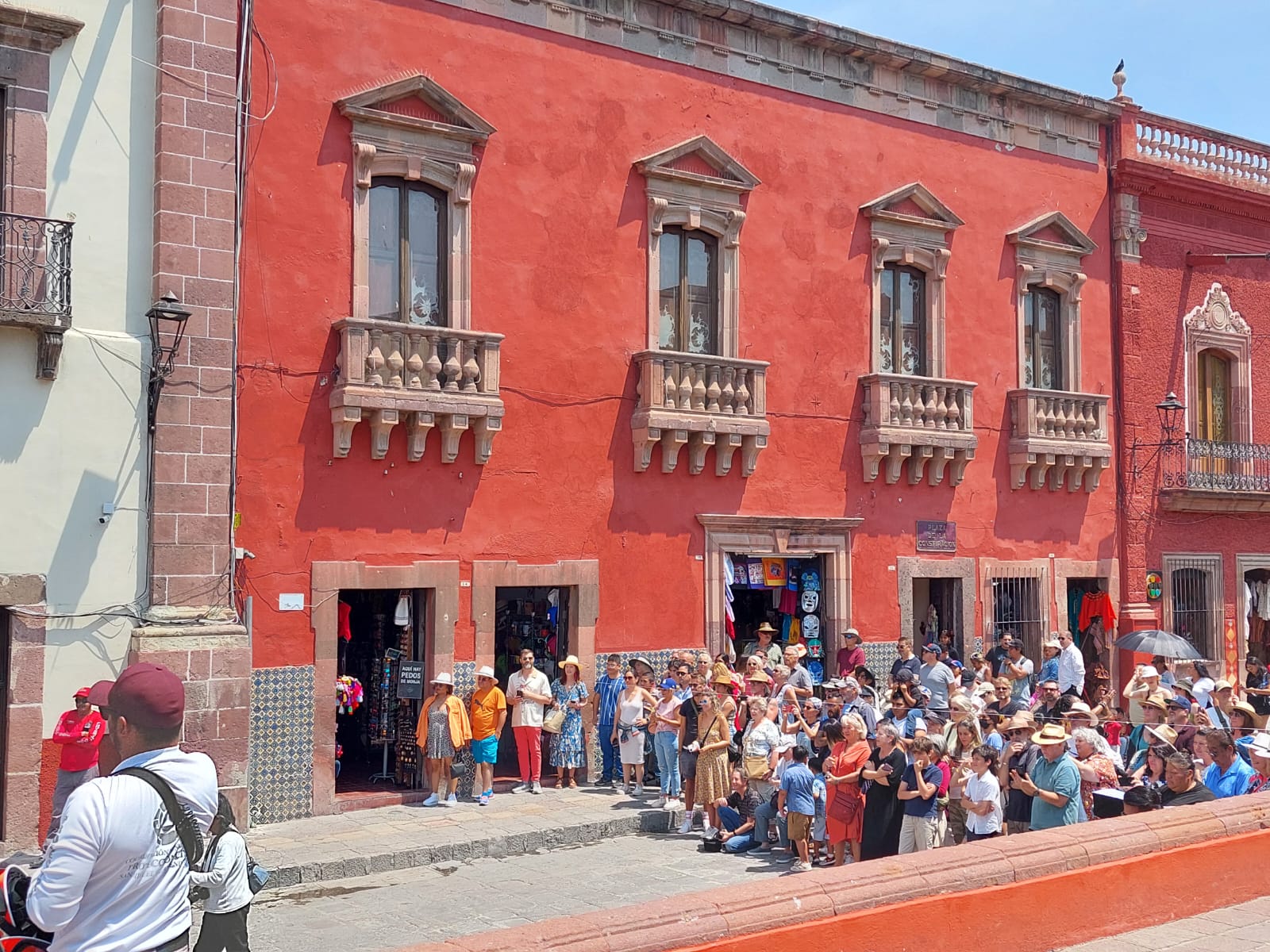
*
Before 11:30am the people in charge of the event began to hang the figures. They hung four figures on each of the four strings, so there were 16 figures in total hanging at the same time. The figures were devils, women, men and two flamingos. There would be in total 25 figures, nine others brought out and suspended after the first 16 were burned.
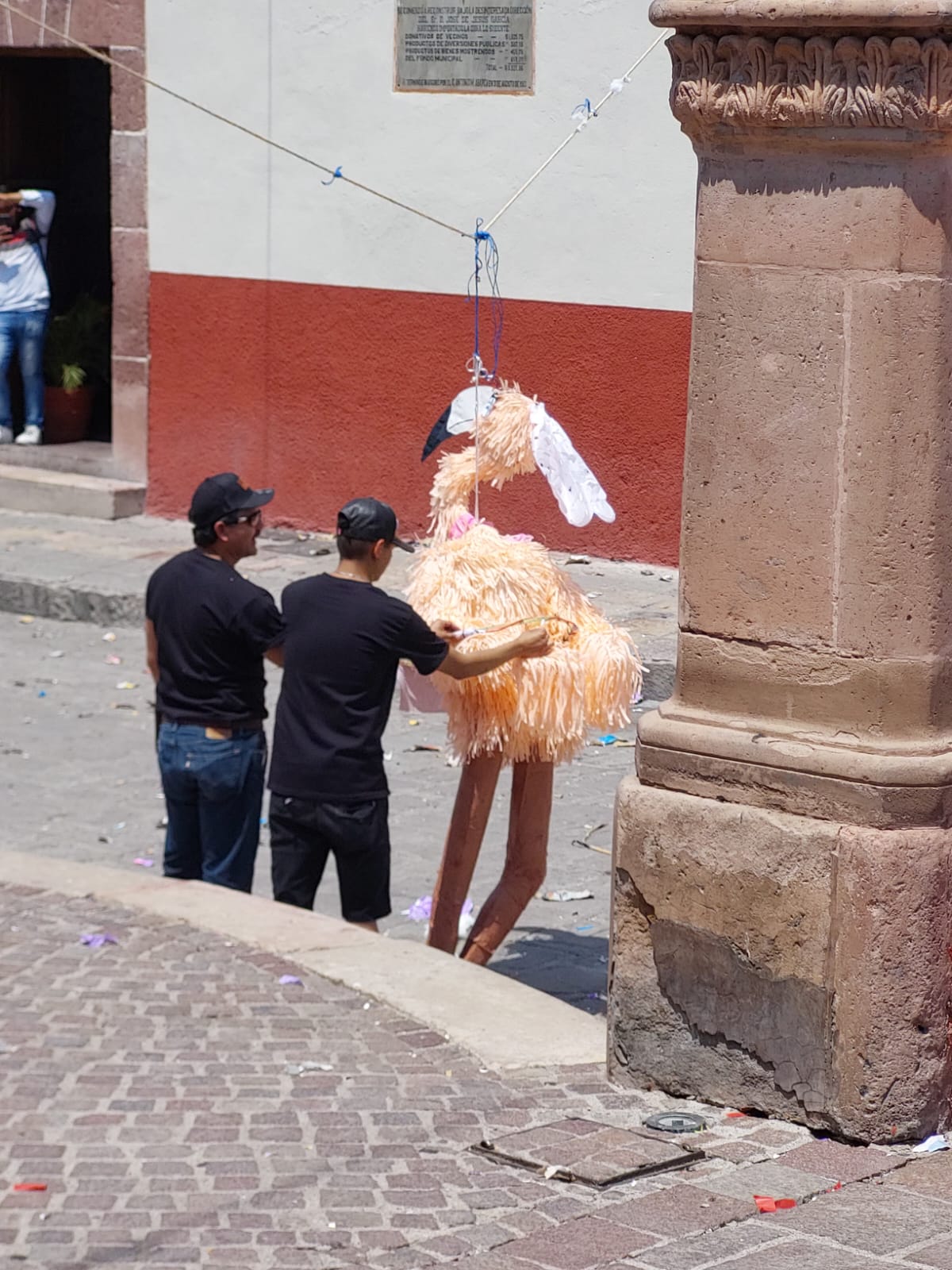
*
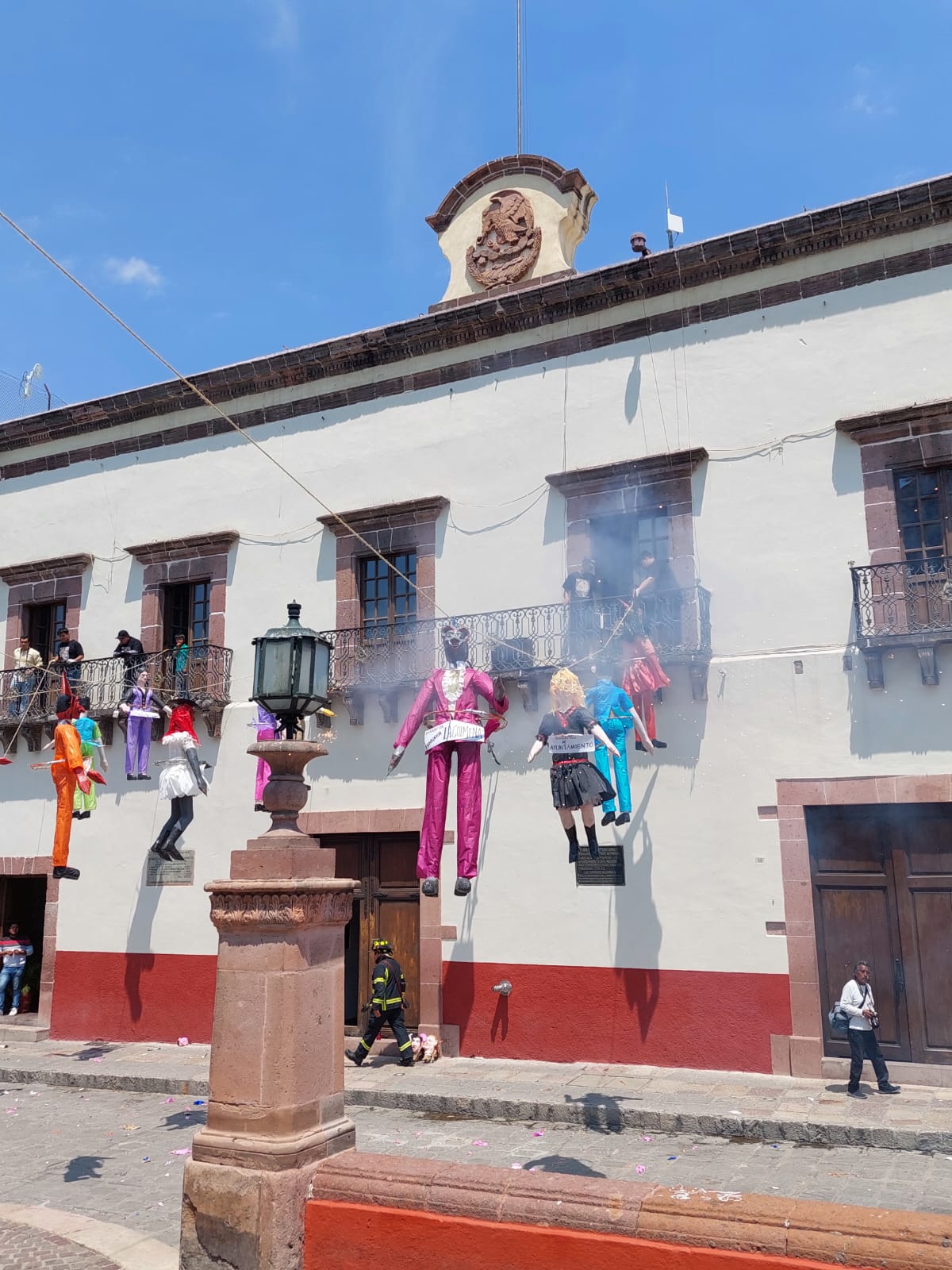
*
The figures are made by the Espinosa family, who have been making these personifications for more than 40 years. Businesses that want to participate, contact the family, tell them what figure they want, pay for it and the family makes it. The people in charge of the burning are all relatives. They all wear colorful t-shirts that say "Judas 2024". At the end some people approached wanting to buy t-shirts. As they only made t-shirts for themselves, eventually they took those off and sold them for $500. They also sold several unexploded character faces for $100 and $200.
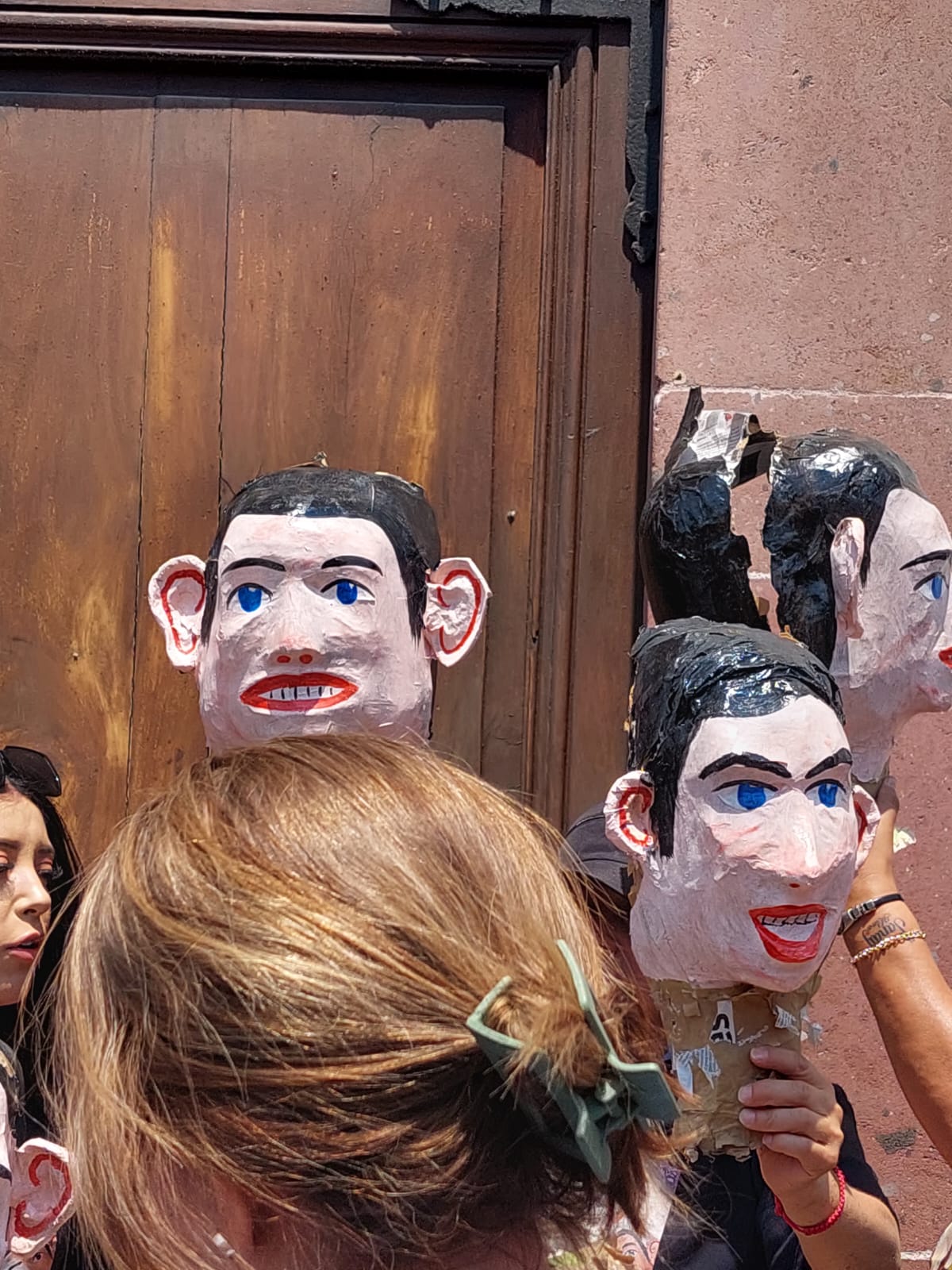
*
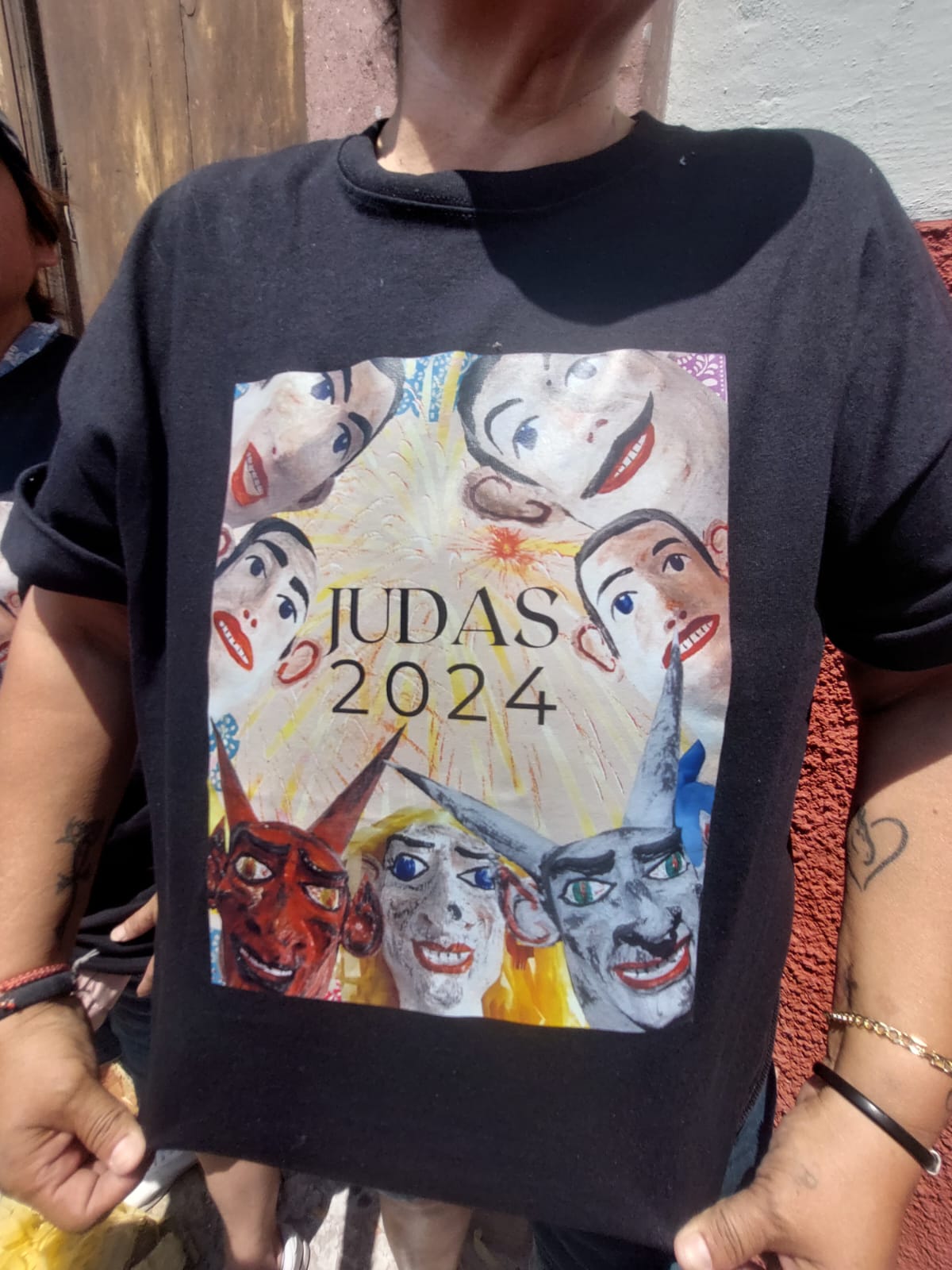
*
At 11:45am all the figures were hanging and ready, just waiting for the 12pm church bells to begin the burning. At that moment two people approached each figure and with a cigar they lit the figure full of gunpowder. As soon as they lit it, some boys who were on the balcony, pulled the rope so that the figure rose up and was suspended. Around the figure there is a ring, which throws sparks and spins the figure. It stops for a moment and starts spinning again. And then one more time. After the third cycle, the figure explodes in the air and all the pieces of the figure (legs, arms, torso, head) fall to the ground. There was only one figure that before exploding caught fire and fell to the ground, which was the first flamingo they burned. As soon as that happened, two firemen approached to put out the fire. It was not a big deal.
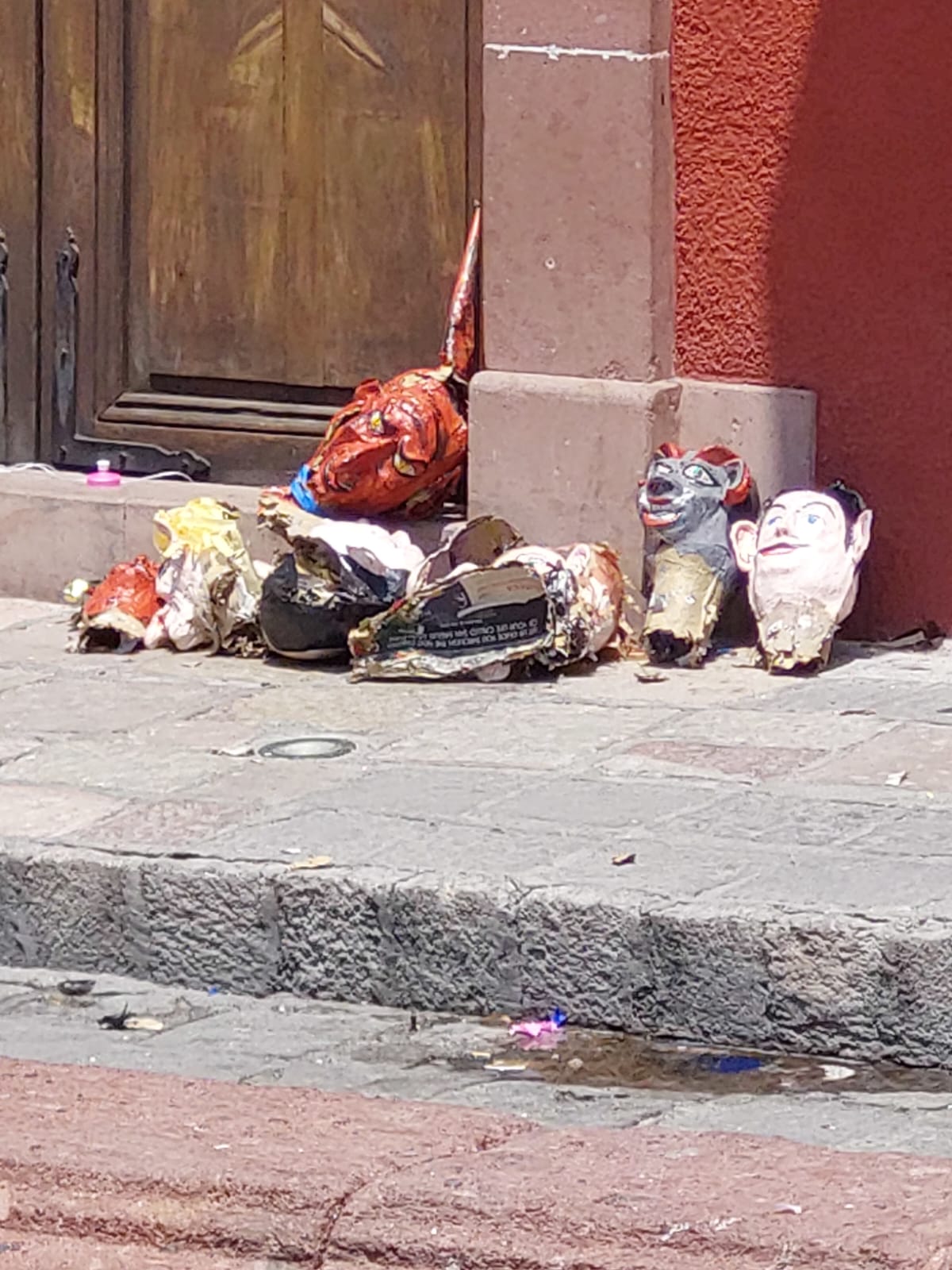
*
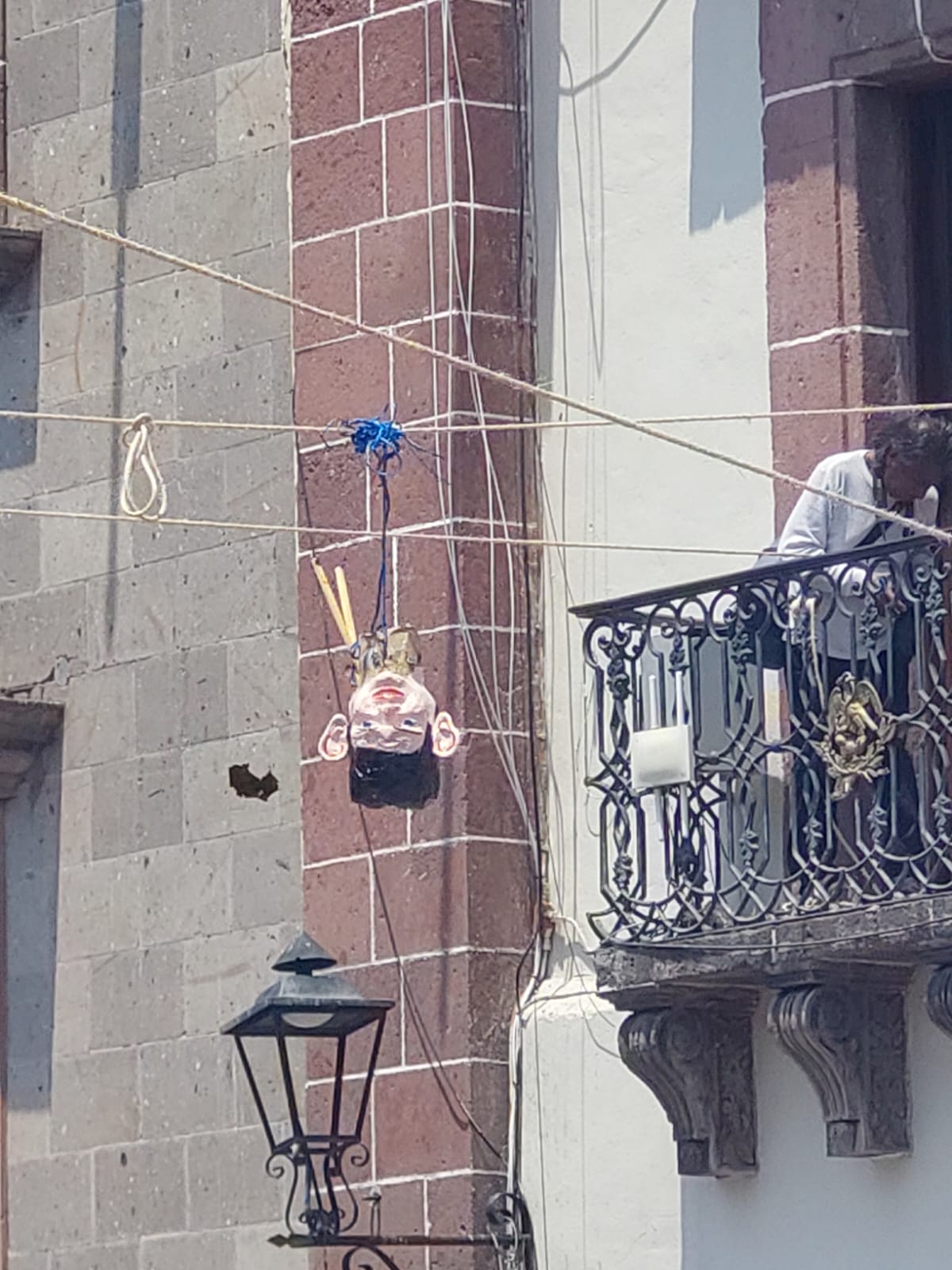
*
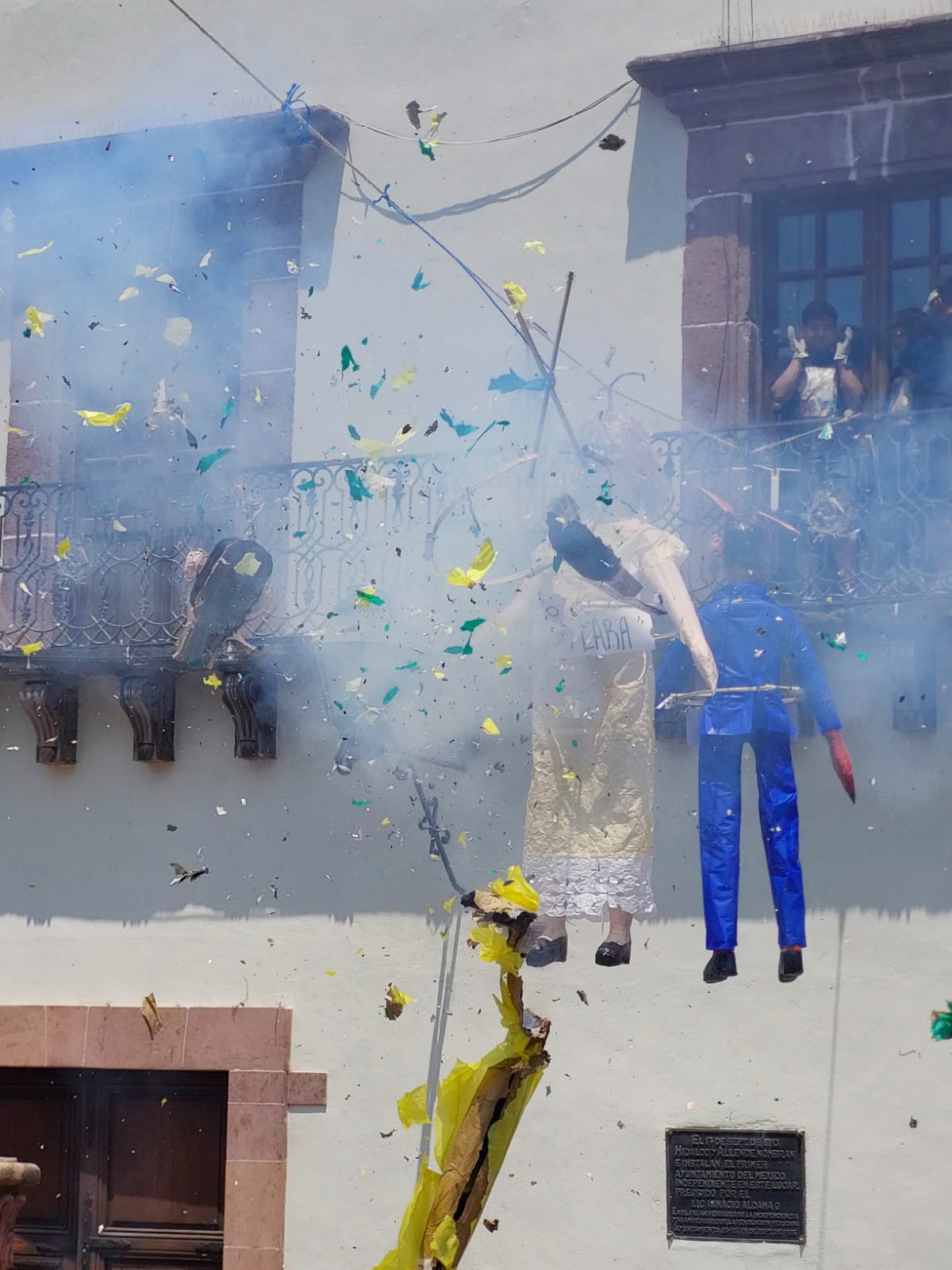
*
The event ended at 12:45pm. As soon as it ended, again the street sweepers to leave the street completely clean. Signaling the end of Holy Week, after that event, the tourists who had come to San Miguel to spend a few days begin returning home.
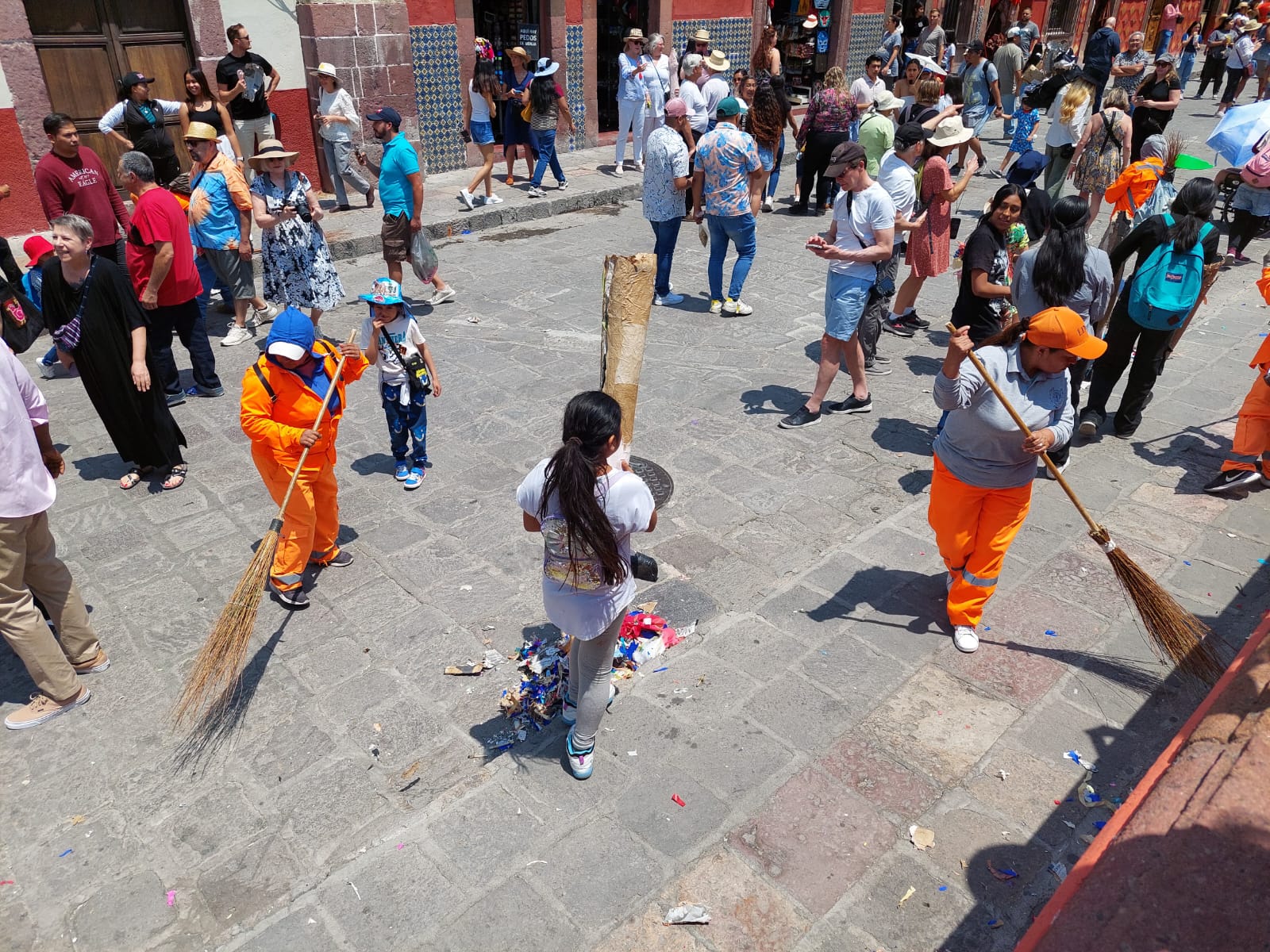
*
**************
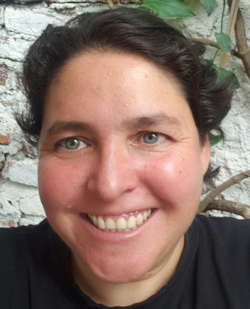
Luisa Ruiz is a chemistry teacher, transpersonal psychotherapist, grief counselor and workshop facilitator, death doula. The Founder of Death Café in Mexico, she has worked for the NGO Uno en Voluntad giving grief workshops. She also worked for Elisabeth Kübler-Ross Foundation as a course and workshop facilitator and as a death doula. She loves reading, writing, hiking and travelling.
**************
*****
Please contribute to Lokkal,
SMA's online collective:
 ***
***
Discover Lokkal:
Watch the two-minute video below.
Then, just below that, scroll down SMA's Community Wall.
Mission

Visit SMA's Social Network
Contact / Contactar

